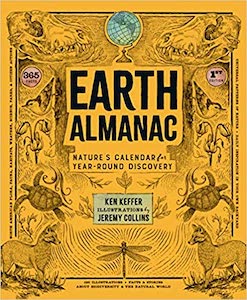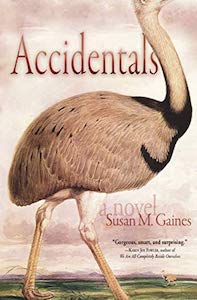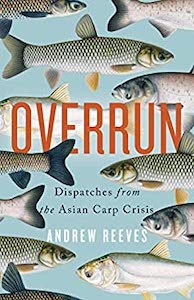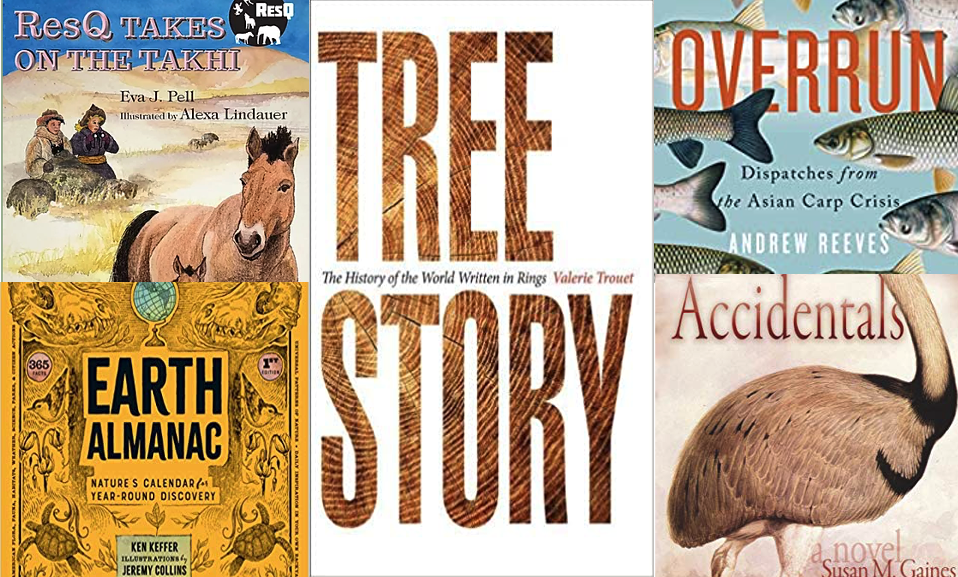From the beginnings of Earth Day 50 years ago, books have played a central role. Rachel Carson’s Silent Spring and Aldo Leopold’s A Sand County Almanac influenced countless individuals to reexamine our relationships with the natural world.
The classics are still worth reading, of course. But there are also many new books that continue to tell nature, conservation and science stories in creative ways. The 50th anniversary of Earth Day will not be marked with festivals and gatherings, but you can still celebrate with a great book.
Here’s a selection of my favorite new titles. I’m impressed by the different ways of telling the story, including a children’s adventure series, fun daily readings of nature facts, a literary novel and more.
-
Tree Story: The History of the World Written in Rings
By Valerie Trouet

Most of us learn in school that you can age a tree by counting its rings. But tree rings can tell us so much more, offering intriguing details about the past…and even the future.
Valerie Trouet is a dendrochronologist, a scientist who studies tree rings, and in Tree Story she shares the stories to be found in tree rings. This is one of those science books that starts with a seemingly specialized subject that ends up expanding your world.
This is one of those books I’ll refer to for years to come. Trouet explains why tree rings can tell us so much, and brings in many other scientific disciplines to draw out an even richer story. Tree rings don’t lie, as she writes, and can thus help us understand past fires and floods, the rise and fall of civilizations, and long-term climate trends.
The subject is intriguing enough on its own, but Tree Story is even more compelling because Trouet is a first-rate storyteller. She includes tales of her field work and her trials and triumphs as a woman scientist.
And as you read the stories, you’ll learn how tree rings can shed light on the fall of Rome, climate change controversies, the real age of celebrated “ancient” trees and much more. If you enjoy great science reads, add this one to your list. Now.
-
Earth Almanac: Nature’s Calendar for Year-Round Discovery
By Ken Keffer, Illustrated by Jeremy Collins

“Being a naturalist is a mind-set, and Earth Almanac unlocks this lifestyle for people who aspire to develop this way of perceiving the natural world,” writes Ken Keffer in the introduction to this fun collection of nature facts.
The book is organized as daily entries, each one including a cool fact about the natural world, including not only animals, plants and fungi, but also rocks, astronomy, noted naturalists and conservationists, and key dates in conservation history.
Focused on North America, much of Earth Almanac focuses on nature near you, the creatures and spectacles found in your backyard or neighborhood. That makes it a particularly relevant read when the natural world outside our window provides so many of us solace and comfort.
Readers of Cool Green Science’s natural history posts will find a similar ethos in Earth Almanac. Keffer has fun with his topics, and shares the bizarre and the everyday surprises all around us. You’ll learn how ants disperse seeds, the mating dances of various birds and snow by lakes isn’t necessarily “lake effect” snow.
It’s organized for daily reading, perfect for by the fire or on the back porch. But you may find, as I did, it’s difficult to keep from reading ahead.
-
The ResQ Series
By Eva J. Pell

A young genius technology whiz and his naturalist cousin journey around the globe to save endangered wildlife in the new series by Eva Pell, former Under Secretary for Science at the Smithsonian Institution. Intended for readers ages 9 through 12, the first two books include adventures in Indonesian Borneo, ResQ and the Baby Orangutan, and Mongolia, ResQ Takes on the Takhi (available for preorder; I received an advance review copy).
Pell conceived of these books when her own grandkids asked for adventure stories. And the stories are page-turning fun, full of adventures and science-fiction level technology. But as an accomplished scientist, Pell gets the details right, whether describing biological concepts, conservation issues or cultures.
Even the seemingly fantastical technology employed by the protagonists have their inspiration from the Materials Research Institute at Penn State.
The books educate on a wide variety of issues, but young readers will hardly notice as they enjoy the adventures. They’re perfect for home schooling, good reads that provide a means to discuss deeper environmental issues and the role of technology
-
Accidentals
By Susan M. Gaines

In this literary novel, a somewhat-ambivalent young man follows his mother, having a mid-life crisis, back to her native Uruguay. His only real enthusiasm is for birding, taught to him by his grandfather. While out birding during his mom’s back-to-the-land farming experiment, he comes across a young woman microbiologist, beginning a love story with unexpected consequences.
The two young lovers often imagine their forays into an Uruguayan marsh, for birds and soil organisms, to be an escape. An escape from family, from politics, from a troubling past. But as the novel unfolds, it’s clear that the escape is an illusion: They can’t outrun the past. Nor can the natural world be separated from family, or environmental destruction, or the horrifying consequences of political history.
This is a multilayered book. Gaines is a naturalist, and this shines through in our descriptions of the natural world. She captures the passion, and escape, offered by birding, a central theme in the novel. But this is more than a nature novel: the characters are lovingly depicted, and there’s a lot happening beneath the surface. The plot twists, without giving away spoilers, land like a gut punch. It’s a novel that will keep you up late. With birds. Lots of birds.
-
Overrun: Dispatches from the Asian Carp Crisis
By Andrew Reeves

The visual of thousands of jumping Asian carp has become a symbol for invasive species run amok, of the extreme damage such species can do. But why have Asian carp proliferated? How did they get here? And why?
Journalist Andrew Reeves sets out to understand the Asian carp crisis, tracing these fish from the Southern fish farms where they were first cultivated and following them up the Mississippi. He talks a colorful cast of characters along the way, showcasing just how much more complex this story really is.
He delves into the science, exploring the ways conservationists are trying to stop the spread – occasionally effectively, often not. But perhaps most interesting is Reeves’s hypothesis that Asian carp became a problem because they were initially seen as an environmental solution, even a miracle cure.
He writes that Asian carp actually benefited from Earth Day awareness. As people questioned the use of herbicides, the search for non-chemical solutions intensified. Some aquaculturists proposed three species of Asian carp, all herbivores, as a “green” solution to aquatic weed problems. It was a cure, it turns out, far worse than the disease. This is an interesting work of narrative nonfiction, but it’s also a cautionary tale.




Thank you Matthew for including this review of the ResQ series. I am very excited to start my nephews along this conservation path with me 🙂